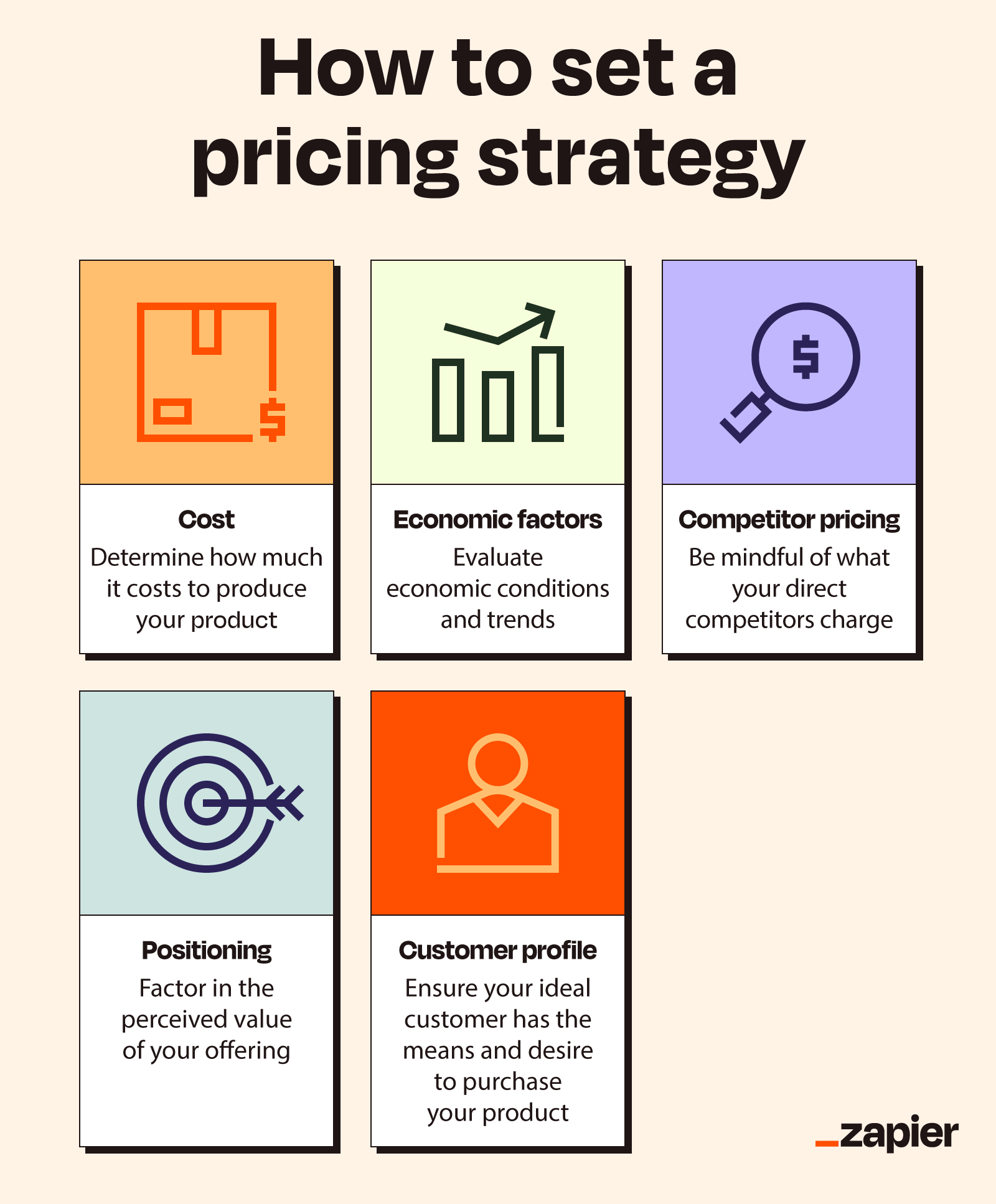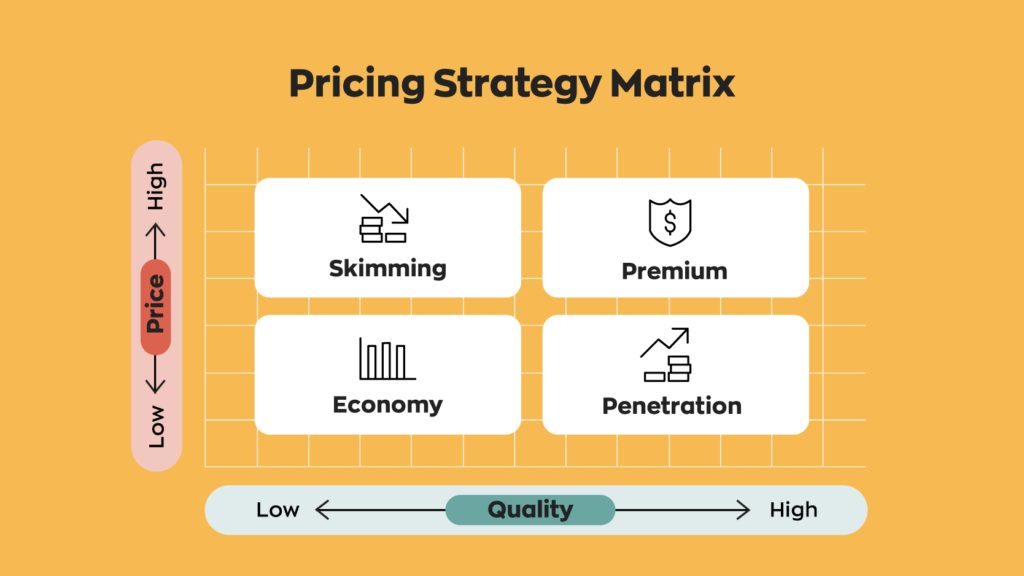Top Mistakes to Avoid When Creating Your Pricing Strategy
Top Mistakes to Avoid When Creating Your Pricing Strategy
Blog Article

Master Effective Pricing Techniques to Make The Most Of Earnings
In the ever-evolving landscape of business, grasping reliable pricing approaches is essential for services aiming to take full advantage of profit. A nuanced understanding of pricing psychology can substantially affect customer habits and acquiring choices.
Comprehending Pricing Psychology
Recognizing prices psychology is vital for companies aiming to enhance their rates approaches. This field examines how customers regard rates and just how these assumptions affect their acquiring choices. Secret ideas in rates psychology include the anchoring effect, where the preliminary price offered acts as a reference factor for consumers, and the idea of price level of sensitivity, which varies amongst different client sectors.
In addition, organizations can take advantage of the concept of perceived value, where the regarded benefits of a service or product can warrant a higher cost point. For instance, costs prices can develop an aura of exclusivity, bring in consumers that associate higher prices with superior quality. On the other hand, mental prices, such as establishing a cost at $9.99 as opposed to $10, can dramatically influence consumer habits by making costs appear much more attractive.
Furthermore, deficiency and necessity can enhance the regarded value of products, motivating quicker investing in decisions. Recognizing these psychological triggers allows services to formulate prices methods that not just drive sales yet additionally foster customer loyalty. Hence, understanding pricing psychology is important for effective pricing approach solution, resulting in improved profitability and market positioning.
Implementing Value-Based Prices

First, conduct extensive marketing research to determine the value vehicle drivers for your target audience. This can include attributes, quality, brand track record, and client service. Next off, segment your consumers based on their willingness to pay and the value they perceive. By doing so, you can customize offerings and pricing methods to line up with different sections.
After collecting insights, set costs that reflect the maximum amount a consumer is ready to pay, making sure that they perceive a fair exchange for the worth received. Interact the worth recommendation effectively, highlighting the benefits and differentiators of your offering. Constantly check market problems and client comments to fine-tune your rates method over time. By applying value-based pricing, companies can boost profitability while fostering long-term client loyalty.
Exploring Dynamic Prices Versions
In today's swiftly changing market landscape, vibrant pricing models have actually arised as an effective method for companies looking for to enhance profits and react to changes popular. These models permit business to change their prices in real-time based upon different aspects such as customer behavior, market fads, and inventory degrees. By leveraging information analytics and formulas, businesses can identify optimal prices points that take full advantage of sales while remaining affordable.
Dynamic rates can take various types, including time-based pricing, where costs change based on time of day or period, and demand-based pricing, which adjusts rates according to existing customer need. This adaptability not only boosts success however likewise enhances consumer complete satisfaction by using prices that reflect real-time market problems.
Carrying out vibrant pricing calls for a durable technological framework and a deep understanding of consumer sections. Transparent interaction concerning prices modifications can aid alleviate client dissatisfaction and foster count on, ultimately leading to continual profitability in a competitive industry.
Analyzing Rival Pricing
Monitoring rival pricing is important for businesses intending to maintain a competitive side in their corresponding markets. By evaluating rivals' rates strategies, companies can identify market trends, comprehend consumer preferences, and readjust their prices as necessary. This analysis includes celebration data on competitors' prices, marketing approaches, and item offerings to educate prices choices.
To successfully examine competitor rates, businesses should utilize different devices and strategies, such as price monitoring software, market research study reports, and customer feedback. This information can disclose exactly how rivals position their items and solutions, enabling services to distinguish their offerings or embrace similar techniques to remain pertinent.
Additionally, it is important to classify rivals into direct and indirect competitors. Direct rivals supply comparable products or services, while indirect competitors might accomplish the very same client demand with different remedies. Recognizing the nuances in between these teams will certainly make it possible for services to tailor their pricing strategies a lot more efficiently.
Eventually, recurring competitor prices analysis is important for making informed prices decisions. It enables businesses to stay agile in feedback to market shifts, ensuring they can confiscate possibilities and alleviate risks linked with rates methods.
Examining Prices Efficiency
Understanding just how competitor prices influences market dynamics results in an all-natural concentrate on evaluating prices efficiency within one's very own company. This evaluation is essential for determining locations of stamina and more opportunities for improvement, eventually improving productivity.

Additionally, conducting regular pricing audits can expose inconsistencies in between expected and actual efficiency. This includes contrasting pricing information across different sectors and channels to recognize variances and determine fads. Additionally, incorporating consumer responses can give insights into regarded value versus real prices, ensuring placement with market expectations.
Last but not least, leveraging information analytics tools can facilitate much deeper insights right into prices efficiency, enabling companies to make data-driven changes (Pricing Strategy). By continually reviewing rates efficiency, companies can adapt to market modifications and maximize their techniques, making certain sustained earnings in a competitive landscape
Final Thought
Reliable rates strategies are necessary for making best use of revenue in an open market. By leveraging prices psychology, businesses visite site can enhance viewed value and dressmaker pricing to varied customer segments. The adoption of value-based and dynamic prices versions helps with real-time modifications based upon demand and consumer readiness to pay. In addition, continuous analysis of rival rates and performance metrics guarantees critical agility. Ultimately, a thorough strategy to pricing not just drives earnings yet additionally cultivates client complete satisfaction and commitment.
Comprehending pricing psychology is essential for organizations intending to maximize their prices strategies. Understanding these emotional triggers enables businesses to formulate rates approaches that not only drive sales yet additionally foster client commitment. Thus, mastering rates psychology is necessary for efficient pricing approach formula, leading to improved profitability and market positioning.
By evaluating rivals' pricing strategies, business can recognize market patterns, understand consumer choices, and readjust their prices as necessary. By leveraging pricing psychology, services can improve viewed worth and tailor rates to Going Here varied consumer segments.
Report this page